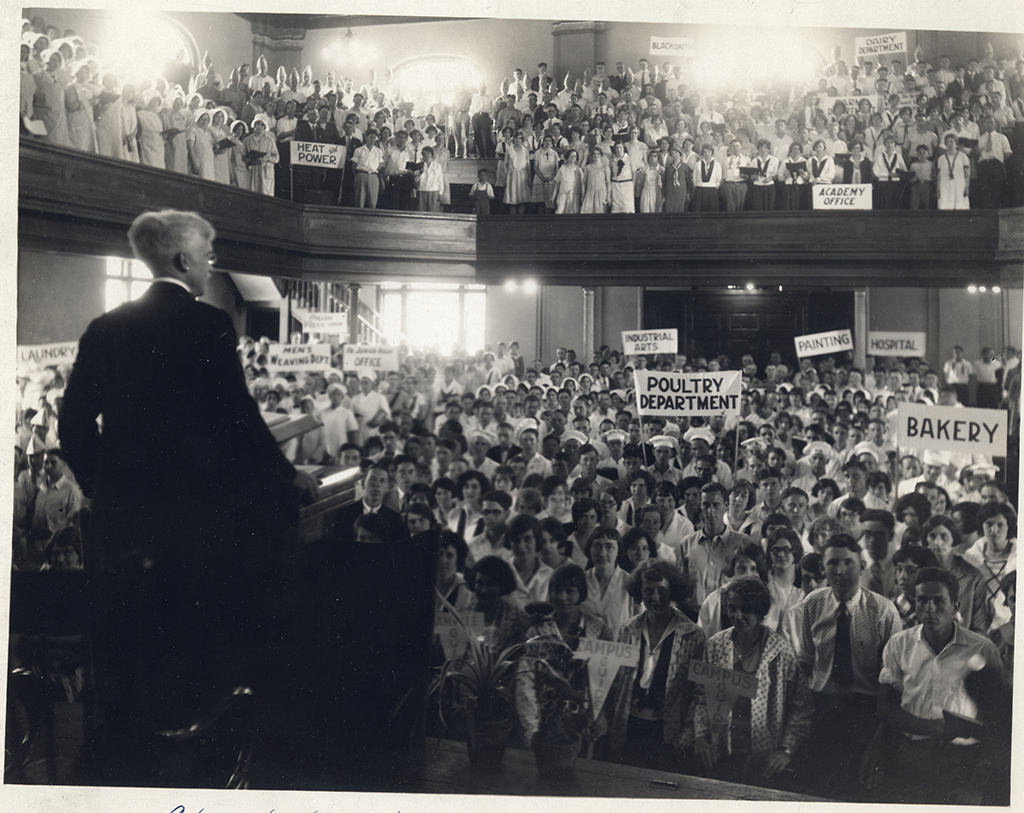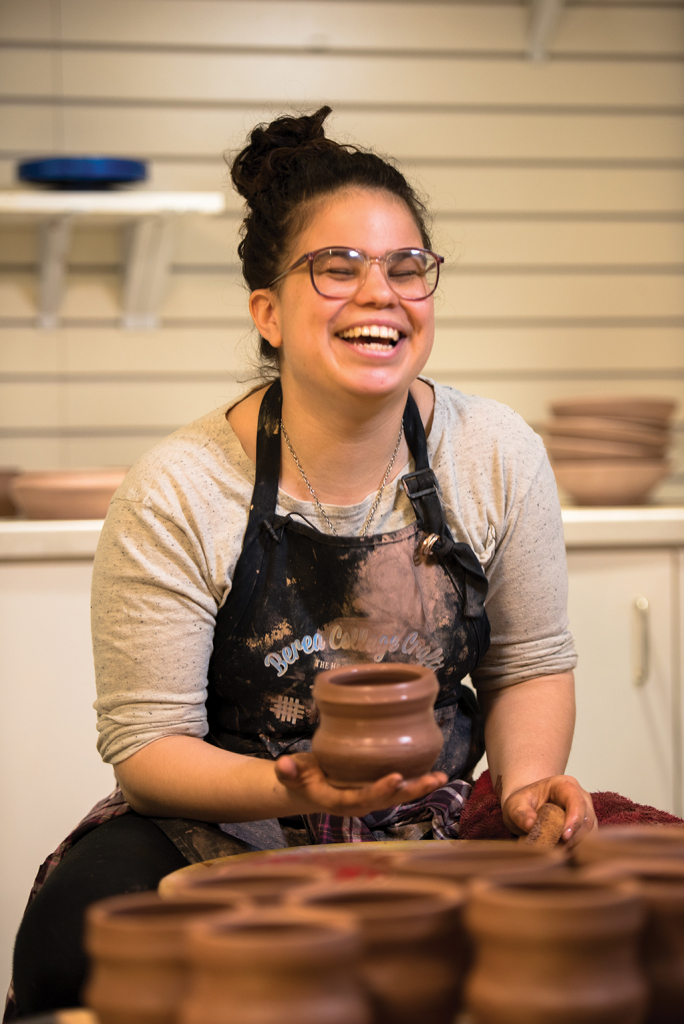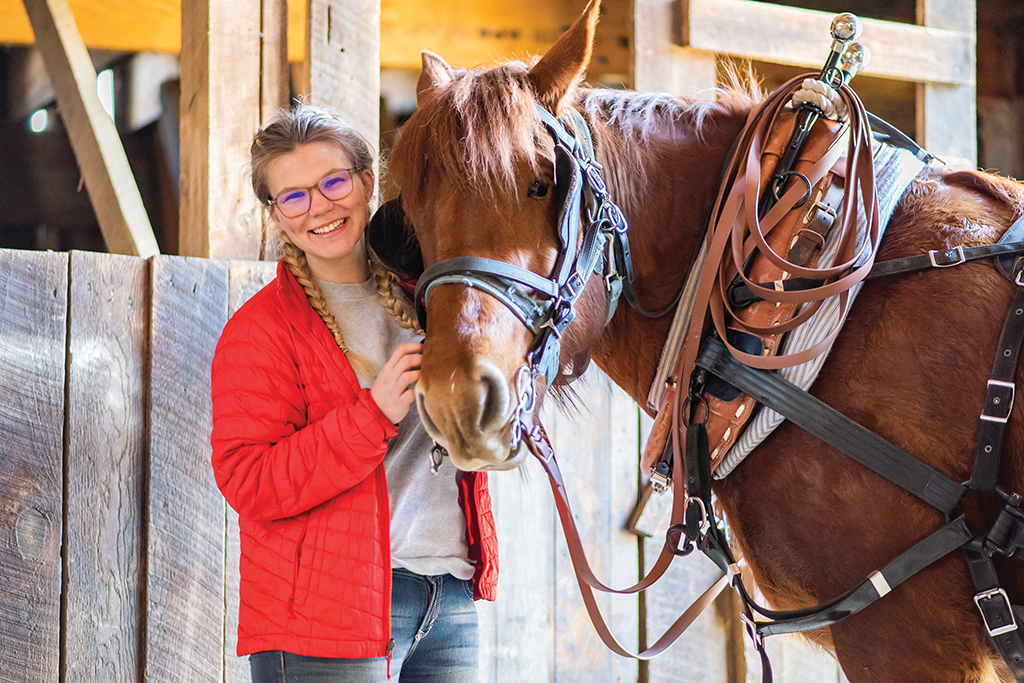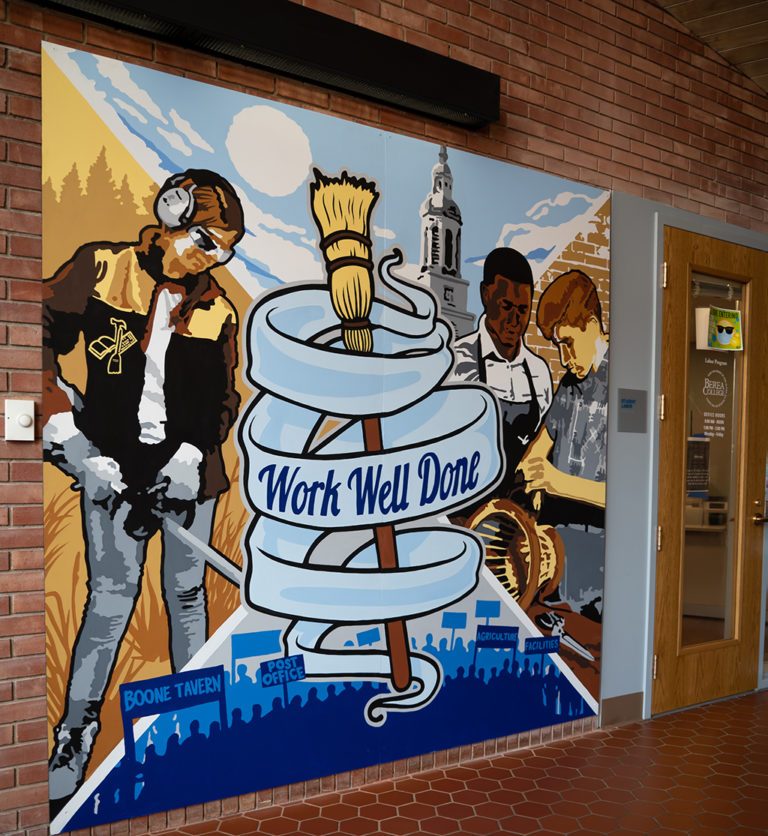Work has been a hallmark of the Berea College experience since its founding. In the beginning, all members of the school community—staff, faculty and students—worked together to form a self-sufficient and thrifty enterprise. They farmed, cooked, cleaned and built, a necessity for funding education for students in need of opportunity. Without knowing it, they were also laying the groundwork for the role of labor as part of a unique learning experience at Berea College.
The labor experience enables students to apply their classroom learning to the many practical skills so essential to life. Today, all students at Berea are required to work, and this year, the College marked 100 years of celebrating Berea’s Labor Day, which honors work well done through the Labor Program.

Berea has a strong ethos that all labor is important. As expressed in the fourth Great Commitment, the College works “to promote learning and serving in community through the Student Labor Program, honoring the dignity and utility of all work, mental and manual, and taking pride in work well done.”
“Berea is not satisfied with students just doing the work and collecting a small paycheck,” said Rosanna Napoleón ’13, training and learning assessment specialist. “We strive to make every position meaningful and connected to the mission of the College.”
In fact, during President Lyle Roelofs’ first two years as president, he traveled the country meeting various alumni groups and asked them what they considered the most significant part of their learning experience at Berea—about 80 percent identified some part of their work experience.
Think of any necessary task on campus, and chances are pretty good a student worker has completed it. Today, the Labor Program has more than 1,500 jobs available on campus in more than 130 different departments. Students’ labor assignments are guided by their skills, interests, areas of study and personalities. The aim is for students to have ownership in their work through real responsibility.

Some positions are in offices across campus. While students perform basic clerical tasks like answering the phones, taking messages and responding to mail correspondence, most do more: facilitate trainings with the Labor Department, host some of the famous presenters for convocations, or create summer dance-offs as part of Student Life.
Some students choose more academic-focused labor positions. They might work as a chemistry research assistant, a consultant with their peers in the Writing Resources center, or as the editor of The Pinnacle, the student newspaper.
Other students balance their mental school work with a labor position involving manual work—working with their hands— but with their minds also fully engaged. They serve as apprentice weavers in Student Craft, as the poultry manager at the College Farm, as janitorial staff with Student Life or as bakers in the Farm Store.
Positions at community service-oriented organizations are central to the Labor Program mission. One of these is Berea Kids Eat, a community U.S. Department of Agriculture child nutrition program dedicated to increasing household food security and building community food resiliency. Another is the New Opportunity School for Women, which empowers Appalachian women to improve their financial, educational and personal circumstances.
New, off-campus, summer labor experiences expand the geographical reach of the Labor Program, giving students the opportunity to find a position in a specific discipline. Students have already worked at an equine therapy training program, with a University of Kentucky archaeology professor, and for a nonprofit agency serving refugee children.

In celebrating Labor Day centennial, the Labor Program commemorates a century of recognizing service that connects students to work. “It is impossible to see 100 years into the future,” said Sylvia Asante, dean of Labor, “but the students will continue to be on the cutting edge and to want to give back.”
To better prepare students for future work and careers, the department is focused on strengthening trainings and resources. It is involving visiting experts and professional alumni to share a broader perspective. The intent is that students will make connections in a range of fields and build a bridge to post-college employment opportunities.
Asante sees an even greater role for technology in the future. They are collaborating with the computer science department to develop a database with a comprehensive evaluation system providing labor supervisors with the tools to give students effective feedback, and focusing on the myriad nuances of mastering work skills.
One thing is certain: the school will retain the bedrock role of labor in a Berea College education. “I didn’t understand the value of the Labor Program until I left college for the workplace,” Napoleón recalled. “I have worked in education, at a nonprofit and in manufacturing, and Berea has prepared me for all of those areas with high-level skills I learned in the Labor Program. Many alumni, including myself, say that the Labor Program was their most significant experience in college.”

A Labor of Yum
The Berea College Farm Store unveiled a surprise for the Labor Day Centennial—a new, made-from-scratch cookie created by students Lisa ’21, a dietitian major, and Treasure ’23, a Spanish major. The two currently work in the Farm Store and jumped at the chance to create this one-of-a-kind recipe. The best way to describe this lemon and blueberry cookie, filled with locally grown products, is refreshing and a true testament to our student workforce. Learn more and find the recipe here.
Photo by Crystal Wylie ’05


